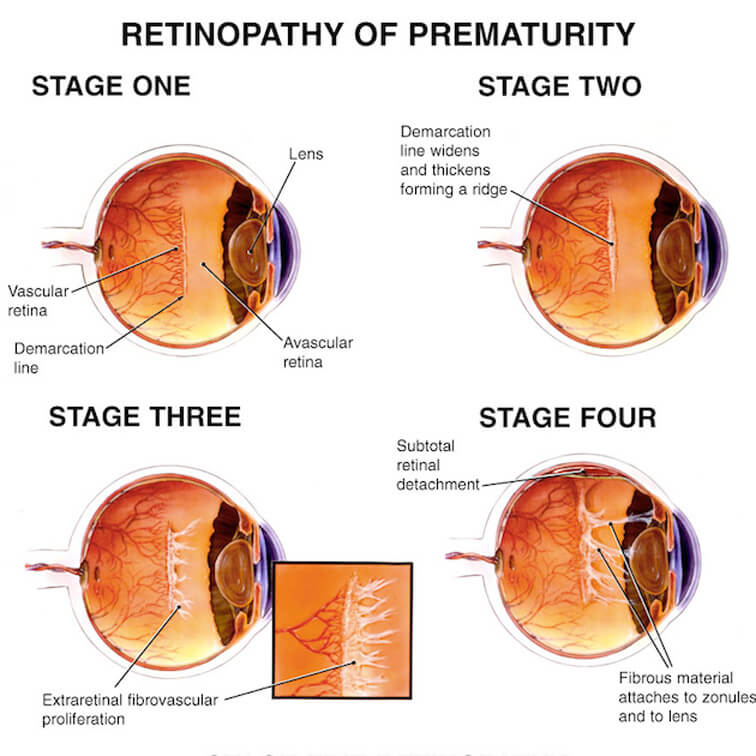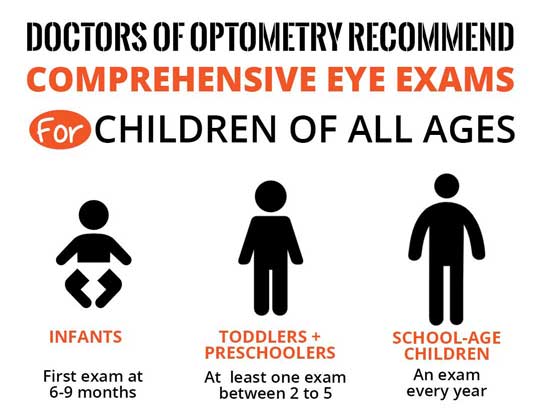
Retinopathy of prematurity (ROP) is an eye disease that affects some premature babies born before 31 weeks. (A full-term pregnancy lasts about 38 to 42 weeks.)
This is a problem that affects the tissue at the back of the eye, called the retina. The retina detects light and sends signals to the brain so you can see.
ROP causes unwanted blood vessels to grow in the baby’s retina. These blood vessels can cause serious eye and vision problems later.

ROP may go away on its own as the baby grows. However, as the baby grows, it should be examined regularly by an ophthalmologist. Sometimes urgent treatment is needed to prevent blindness.
If the condition is not treated in a timely manner, the child may suffer severe and permanent vision loss or even go blind.
Read more: When do you need an eye exam?
The development of blood vessels in the eyes usually ends a few weeks before birth. A baby born prematurely is exposed to many different things.
Medications, oxygen, bright light, or temperature changes can affect the development of blood vessels in the eye. Here are some of the things that doctors think could be contributing to ROP:
• Less than 3 pounds at birth.
• A premature baby born at 28 weeks has a higher risk of ROP than a premature baby born at 32 weeks.
• Give the baby extra oxygen after birth.
• White babies are more likely to develop ROP than black babies.
• Premature babies are also more likely to develop ROP if they have other health problems. These problems include anemia (low iron levels in the blood), lack of vitamin E, or breathing problems.

Shortly after birth, all premature infants should be screened for retinopathy of prematurity (ROP). An ophthalmologist can examine the baby’s eyes while he or she is in the hospital.
However, ROP may not be visible until several weeks after birth. Therefore, premature babies at risk of ROP are usually examined by an ophthalmologist between 4 and 6 weeks after birth and again thereafter.
It is important that you take your baby with you to all follow-up appointments with your eye doctor. Early detection and treatment can help prevent permanent vision loss.
Read more: Signs of possible eye problem in children
First, your eye doctor may check ROP to see if it goes away on its own. If the abnormal blood vessels continue to grow, the baby’s eyes should be treated right.
ROP disease can be treated in one or more of the following ways depending on the level and specific parts of the retina in the back of the eye:
• Laser treatment: In laser treatment, the ophthalmologist uses a laser to burn the edge of the retina.
• Freezing treatment (cryotherapy): During freezing treatment (cryotherapy), the surgeon uses a frozen instrument to destroy part of the retina.
• Eye injections of medication: Anti-VEGF drugs are also currently used to treat ROP. These drugs are injected into the eye to stop abnormal blood vessel growth.
Drugs for ROP are also being researched. These drugs are injected into the eye to stop abnormal blood vessel growth.
ROP can cause nearsightedness, retinal detachment, poor vision, or misalignment of the eyes. It is also more likely to increases the risk of having glaucoma. As infants with ROP grow, they should be checked regularly by an ophthalmologist for vision problems.